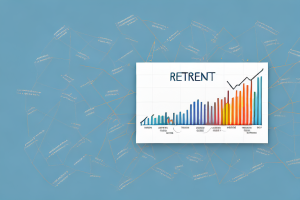Retirement savings is a topic that becomes increasingly important as individuals approach their mid-50s. At this stage in life, most people are starting to plan for their retirement and allocate their resources accordingly. However, the question remains: what is the average retirement savings for a 55-year-old?
Understanding the importance of retirement savings
Retirement savings are crucial for individuals in their mid-50s, as this is the time when they should aim to have a substantial nest egg that will sustain them throughout their retirement years. With life expectancies increasing and the cost of living constantly on the rise, relying solely on Social Security benefits may not be enough. Therefore, it is vital to understand the importance of retirement savings and take proactive steps to build a robust financial cushion.
One reason why retirement savings are important is that they provide individuals with financial security and peace of mind during their retirement years. Having a substantial nest egg allows retirees to maintain their desired standard of living and cover expenses such as healthcare, housing, and leisure activities. Without adequate savings, retirees may be forced to rely on government assistance or family support, which can be emotionally and financially burdensome.
Another important aspect of retirement savings is the power of compound interest. By starting to save early and consistently contributing to retirement accounts, individuals can take advantage of compounding returns over time. This means that the interest earned on the initial savings will also earn interest, leading to exponential growth. The longer the savings have to grow, the greater the potential for significant wealth accumulation. Therefore, it is crucial to start saving for retirement as early as possible to maximize the benefits of compound interest.
Age-specific considerations for retirement planning
As individuals approach their 55th year, there are several age-specific considerations that come into play when it comes to retirement planning. One important factor is the remaining number of working years. At this stage, most individuals have around ten years remaining until retirement, which means there is a limited window of opportunity to save and invest. This time constraint underscores the need for effective and efficient financial planning.Another consideration is the potential health-related expenses that can arise during retirement. With increasing age, healthcare costs tend to rise, and it is important to factor these into your retirement savings plan. Furthermore, any outstanding debts should be addressed to ensure a financially secure retirement.
Exploring the financial landscape for 55-year-olds nearing retirement
The financial landscape for individuals nearing retirement at 55 is multifaceted and requires careful navigation. It is essential to evaluate your current financial situation, including debt levels, assets, and existing retirement accounts, to determine the best course of action. Analyzing your financial standing will help identify any gaps between your current savings and the amount needed for a comfortable retirement.
How much should a 55-year-old have saved for retirement?
While it is challenging to pinpoint an exact amount that a 55-year-old should have saved for retirement, financial experts suggest aiming for a savings target that is equivalent to at least 10 to 15 times your annual income. However, this is a general guideline, and personal circumstances may warrant adjustments to this benchmark. Factors such as desired lifestyle during retirement, anticipated sources of income, and estimated healthcare expenses should all be taken into consideration when determining an appropriate savings goal.
Factors influencing retirement savings at age 55
Various factors come into play when assessing retirement savings at age 55. Key influences include income level, employment history, investment performance, and lifestyle choices. Individuals with higher incomes and stable employment histories may have an advantage in terms of amassing greater retirement savings. Additionally, the performance of investment portfolios, such as stocks, bonds, and real estate, can significantly impact the overall retirement savings. Finally, lifestyle choices, such as prioritizing saving and frugality, can also play a role in determining the amount saved for retirement.
Determining your retirement goals and financial needs
Before making any decisions regarding retirement savings, it is essential to determine your retirement goals and financial needs. This involves envisioning your desired lifestyle during retirement and calculating the corresponding expenses. This includes estimating the costs of basic necessities, healthcare, travel, and any specific hobbies or activities you plan to engage in during your retirement years. By mapping out your goals and aligning them with your financial needs, you can establish realistic expectations and create a savings plan tailored to your unique circumstances.
Assessing the current state of your retirement savings
To gauge the current state of your retirement savings, it is essential to conduct a thorough assessment of your financial situation. This assessment should include a review of your retirement accounts, such as 401(k)s or IRAs, as well as any other investment vehicles. Additionally, take into account any pension plans or employer-sponsored retirement benefits you may be eligible for. By examining these resources, you can better understand where you stand in relation to your retirement savings goals and make any necessary adjustments.
Strategies to boost your retirement savings at age 55
If you find that your retirement savings are falling short, there are several strategies you can employ to boost your financial readiness. One approach is to maximize your contributions to employer-sponsored retirement plans, such as 401(k)s, taking advantage of any matching programs offered by your employer. Additionally, consider exploring catch-up contributions, which allow individuals aged 50 and older to contribute higher amounts to their retirement accounts.Diversifying your investment portfolio is another effective strategy. By spreading your investments across different assets and sectors, you can mitigate risk and potentially maximize returns. It is also advisable to consult with a financial advisor who can provide personalized guidance and suggest investment opportunities aligned with your risk tolerance and retirement goals.
Evaluating different investment options for building retirement wealth
When it comes to building retirement wealth, there are numerous investment options available for consideration. These include stocks, bonds, mutual funds, real estate, and various other financial instruments. Each investment option carries its own risks and rewards, and it is crucial to carefully evaluate each option based on your risk tolerance, time horizon, and financial goals. It is advisable to seek professional advice to ensure that your investment choices align with your retirement objectives.
Maximizing employer-sponsored retirement plans for individuals in their mid-50s
For individuals in their mid-50s, maximizing contributions to employer-sponsored retirement plans is crucial. These plans, such as 401(k)s, offer tax advantages and potential employer matches, making them a valuable tool for boosting retirement savings. By contributing the maximum allowable amount, you can take advantage of tax-deferred growth and potentially increase your retirement nest egg. Additionally, consider utilizing catch-up contributions, which allow individuals aged 50 and older to contribute additional funds beyond the regular limits.
The role of Social Security in supplementing retirement income at age 55
While Social Security benefits will play a role in supplementing retirement income, they may not be sufficient to meet all financial needs. It is important to understand the eligibility criteria and expected payout amounts for Social Security. This information can be obtained from the Social Security Administration and will help you in making informed decisions when planning for retirement. Considering other sources of income, such as pensions or part-time work, can also contribute to your overall retirement income.
Balancing short-term financial obligations with long-term retirement goals
During this stage of your life, it is crucial to strike a balance between short-term financial obligations and long-term retirement goals. It is essential to minimize debt, including credit card balances, mortgage loans, and other outstanding liabilities. By managing and reducing your debt, you can free up additional funds that can be redirected towards retirement savings. However, it is important to ensure that you have an emergency fund in place to handle unexpected expenses without derailing your long-term retirement plan.
The impact of inflation on retirement savings for 55-year-olds
Inflation can significantly affect the purchasing power of retirement savings. As prices rise over time, the same amount of money will buy less in the future. Therefore, it is crucial to factor inflation into your retirement savings calculations. One way to counteract the impact of inflation is to invest in assets that historically outpace inflation, such as stocks or real estate. Additionally, regularly reviewing and adjusting your retirement savings contributions can help offset the effects of inflation.
Exploring alternative sources of income during retirement years
When planning for retirement, it is important to explore alternative sources of income beyond traditional retirement accounts. This can include rental income from real estate investments, dividends from stocks and mutual funds, or income generated from part-time work or freelance opportunities. These additional income streams can bolster your retirement savings and provide extra financial security during your golden years.
Navigating potential economic downturns and their effects on retirement funds
Economic downturns and market volatility can have a significant impact on retirement funds. Therefore, it is crucial to develop a financial plan that factors in potential market fluctuations. Diversification, as mentioned earlier, can help mitigate the effects of market downturns. Regularly reviewing and rebalancing your investment portfolio can also ensure that you are taking appropriate steps to protect your retirement savings during uncertain times. Staying informed about economic trends and seeking professional advice can further aid in navigating potential challenges.
Seeking professional advice and guidance for optimizing retirement savings at age 55
Given the complexities involved in retirement planning, seeking professional advice and guidance can be immensely beneficial. Financial advisors can assess your unique situation, develop personalized strategies, and provide ongoing support to optimize your retirement savings. They can help you create a comprehensive financial plan, calculate retirement goals, and make informed investment decisions. Engaging with a trusted advisor can alleviate stress and provide peace of mind regarding your financial future.
Common mistakes to avoid when planning for retirement at age 55
While planning for retirement, it is important to be aware of common mistakes that can hinder your progress. One common error is underestimating the required savings needed for retirement. Failing to account for all potential expenses can lead to financial struggles during retirement. Another mistake is relying solely on Social Security benefits without supplementing them with other income sources. Additionally, succumbing to overly conservative investment strategies can result in stagnant growth and may not keep pace with inflation. Finally, delaying retirement savings until later years can limit the time available to build a substantial nest egg. By avoiding these mistakes and adopting proactive strategies, you can enhance your retirement readiness.
Planning for healthcare costs and medical expenses during retirement years
One critical aspect of retirement planning is accounting for healthcare costs and medical expenses. As individuals age, healthcare becomes increasingly important and expensive. Therefore, it is crucial to allocate sufficient funds to cover medical insurance premiums, prescription medications, doctor visits, and potential long-term care needs. Exploring options such as Medicare and long-term care insurance can help to mitigate the financial burden associated with healthcare costs. By factoring healthcare expenses into your retirement plan, you can better prepare for potential medical needs.
Exploring tax-efficient strategies to preserve and grow your retirement savings
To preserve and grow your retirement savings, it is essential to explore tax-efficient strategies. This can involve utilizing tax-advantaged retirement accounts, such as IRAs or Roth IRAs, which offer tax advantages on contributions or withdrawals. Additionally, considering Roth conversions or utilizing tax harvesting methods can help optimize your retirement savings from a tax perspective. Consulting with a tax professional or financial advisor can provide further guidance on tax-efficient strategies that align with your specific circumstances.
Note: SEO-friendly subheadings are designed to be concise, informative, and keyword-rich, helping the article rank higher in search engine results pages (SERPs) while also attracting readers’ attention.the



